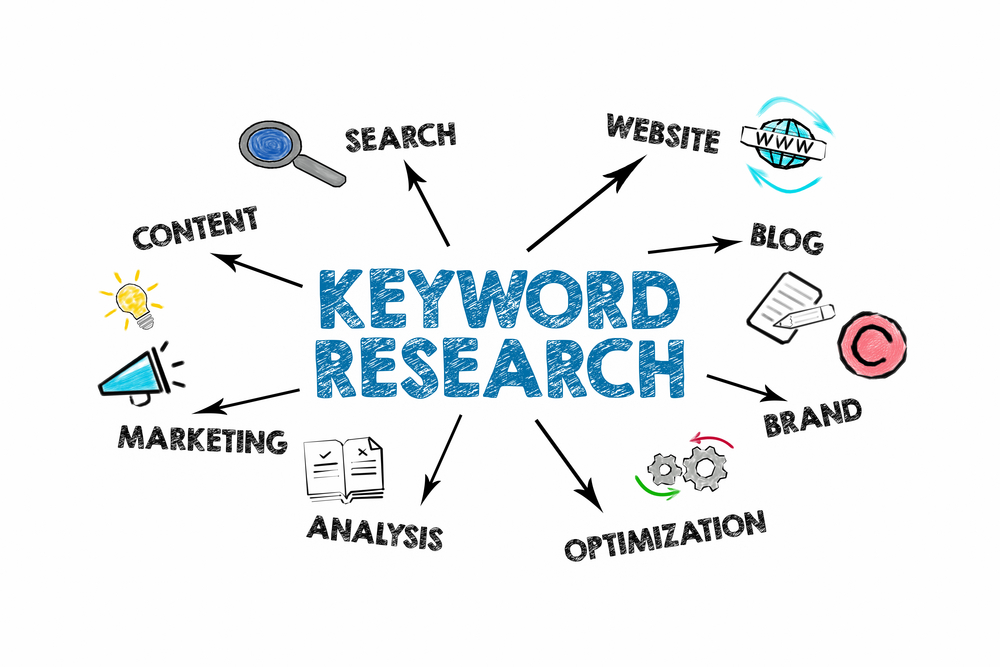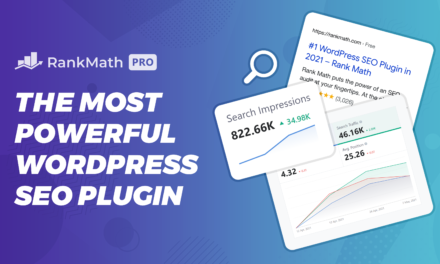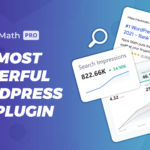Did you know that 93% of all online experiences begin with a search engine? “In the ever-changing digital realm, businesses must proactively anticipate shifts and tailor their marketing strategies for ongoing success.One crucial aspect of digital marketing that cannot be ignored is search engine optimization (SEO). In this blog post, we will delve into the importance of SEO in digital marketing, explore its various components, and discuss how it can be integrated with other digital marketing techniques to achieve better results. So let’s embark on this journey to unlock the full potential of SEO for your business.
Key Takeaways
SEO is an essential element of digital marketing that enables businesses to increase visibility, drive organic traffic and build credibility.
Effective SEO involves keyword research, content creation, technical optimization and link building in order to improve search engine rankings.
Measuring SEO success requires tracking key metrics such as Google Analytics data, search volume & keyword rankings for informed decision making.
The Crucial Role of SEO in Digital Marketing

In the realm of digital marketing, SEO plays a pivotal role in bolstering a business’s online presence, stimulating organic traffic, and refining user experience. Grasping how users search, the answers they are trying to find, and their content preferences allows businesses to fully exploit the advantages of SEO. Implementing a well-structured SEO strategy is crucial to the realization of these goals, and search engine marketing can be a valuable component in achieving them.
The primary objective of SEO is to provide an accessible and user-friendly website with concise and informative messaging and straightforward navigation. The goal of SEO for businesses is to drive organic traffic. This means people are reaching their website directly from the search engine results page (SERP). This organic traffic is vital, as it can lead to increased visibility, credibility, and eventually, sales.
Enhancing online presence

Establishing credibility and trust necessitates a robust online presence for businesses. Optimizing websites for both search engines and users is how SEO aids in realizing this goal. By keeping your website up-to-date and optimized with high-quality, relevant content, you’re more likely to attract customers, generate more sales, and encourage word-of-mouth advertising through social media.
Another key aspect of SEO is off-page optimization, which includes link building and off page seo techniques. High-quality backlinks signal to search engines that the linked content is valuable, resulting in higher search engine rankings. By appearing on the first page of Google search results, businesses can gain increased organic visibility, presenting their offerings to potential customers and increasing the likelihood of users clicking and exploring their site.
Driving organic traffic

SEO, or search engine optimization, drives organic traffic to websites by targeting relevant keywords and creating high-quality content that matches user intent. Search engines give high priority to pages that have valuable information and are of good quality in organic search. Achieving a high ranking in search engine results pages can result in increased web traffic and revenue, with a demonstrable correlation between high rankings and high click-through rates. On the other hand, pages with low-quality content or lacking valuable information will not be favoured in search results.
A well-optimized website that is regularly updated and features high-caliber, useful content is more likely to attract customers and generate more sales. Furthermore, if customers enjoy their experience with your website, they may share it with their social media network, which is the most effective form of word-of-mouth advertising.
Improving user experience

Improving user experience is a key aspect of SEO, as search engines prioritize websites that offer seamless navigation, fast loading times, and valuable content. Catering to mobile users is paramount for SEO as the number of mobile phone users has exceeded the amount of laptop or PC users. If the mobile experience is not satisfactory, visitors may not stay on the website and look for other options instead.
SEO involves optimizing a website’s structure, content, and navigation to enhance user experience. Rapid page load time is essential in SEO, as approximately 25% of visitors will abandon the webpage if it takes more than four seconds to fully load.
By ensuring accessibility for all users, including those with disabilities, you can provide a positive user experience, which can lead to decreased bounce rates, increased engagement, and improved conversions.
Key Components of Effective SEO

Effective SEO involves several key components, including:
Keyword research
Content creation
Technical optimization
Link building
All of these components contribute to better search engine rankings and increased organic traffic. By understanding and implementing these components, businesses can ensure their website is optimized for both search engines and users, resulting in improved visibility and sales.
Examining each of these components in detail will reveal how they contribute to the overarching success of an SEO strategy.
Keyword research
Keyword research involves pinpointing pertinent search terms users are inputting, allowing their strategic inclusion into website content to enhance search engine rankings. By understanding popular search terms and incorporating them into your website’s content, businesses can optimize their website for search engines and attract more visitors looking for their products or services.
Popular tools that can help with local keyword research include:
Ahrefs
SEMrush
Serpstat
Kparser
Moz
The objective of local keyword research is to optimize your website and content with these keywords to enhance visibility in local search results. By monitoring rising and declining trends, businesses can stay up-to-date and find more precise keywords that are pertinent to their niche and likely simpler to rank for.
Content creation
Content creation involves producing high-quality, engaging, and informative content that addresses users’ needs and aligns with search engine ranking factors. By creating content that responds to search queries, businesses can improve their ranking for target keywords and ensure that their website is easily accessible and understood by search engine crawlers.
On-page SEO components, such as title tags, internal links, and content structure, can be optimized to provide a better user experience and improve search engine rankings. By focusing on creating content that is both valuable and informative, businesses can cater to their target audience’s needs and ensure their website ranks higher in search engine results.
Technical optimization
Technical optimization focuses on improving website infrastructure to enhance user experience and search engine rankings. Some key areas of focus include:
Page speed: Ensuring that a website loads quickly to minimize user frustration and improve search engine rankings.
Mobile-friendliness: Optimizing a website for mobile devices to provide a seamless experience for mobile users.
Site security: Implementing security measures to protect user data and build trust with visitors. By addressing these aspects, businesses can provide a better user experience and improve their website’s visibility in search engine results.
Some examples of technical optimization include:
Having a website that is fast-loading
Easily crawlable for search engines
Limited duplicate content
A wide variety of links
Secure implementation (e.g., HTTPS)
Utilization of robots.txt
Structured data
By focusing on these technical aspects, businesses can ensure their website is optimized to perform well in search engine rankings and attract more organic traffic.
Link building
Link building is the process of acquiring high-quality backlinks from reputable websites, which helps boost a website’s authority and credibility in the eyes of search engines. Backlinks signal to search engines that the linked content is valuable, resulting in higher search engine rankings. By obtaining high-quality backlinks, businesses can improve their website’s visibility and attract more organic traffic.
Businesses can improve their online visibility by:
Building high-quality backlinks
Strategies such as guest blogging, digital public relations, and creating quality content that attracts natural backlinks
Using internal links to promote other pages of the website and provide additional content
Using external links to contribute to higher rankings and increased visibility.
Integrating SEO with Other Digital Marketing Techniques
Integrating SEO with other digital marketing techniques, such as social media marketing, email marketing, and paid advertising, can help businesses reach a wider audience and achieve better overall marketing results. By combining these techniques and ensuring a cohesive seo digital marketing strategy, businesses can enhance their online presence, attract more customers, and optimize their marketing performance.
Delving into how SEO can synergize with other digital marketing techniques to achieve enhanced success is worth examining.
Social media marketing

Social media marketing can complement SEO efforts by promoting content, building brand awareness, and driving traffic to a website. By sharing content on relevant platforms, interacting with followers, and crafting content tailored for social media, businesses can increase their brand visibility and attract more potential customers.
Social media marketing can also be used to engage with the audience and collect valuable feedback, which can help businesses make informed decisions about their SEO strategy and content creation efforts. By integrating social media marketing with SEO, businesses can create a comprehensive digital marketing strategy that reaches a wider audience and achieves better results.
Email marketing
Email marketing can support SEO by nurturing leads, driving website traffic, and encouraging user engagement with content. By supplying useful content, such as blog posts, ebooks, and other resources, to prospective customers, businesses can establish relationships with potential customers and motivate them to acquire products or services.
Email marketing can also be employed to drive traffic to a website by sending emails containing links to specific pages on the website. This can help increase the visibility of a website and encourage potential customers to visit the website, ultimately leading to higher conversion rates and improved SEO performance.
Paid advertising

Paid advertising can work alongside SEO to increase brand visibility and drive targeted traffic to a website, ultimately leading to higher conversion rates. By targeting specific audiences and keywords, paid advertising can help businesses reach a larger audience and attract more potential customers.
Paid advertising can also be used to bolster SEO efforts by enhancing brand visibility and directing targeted traffic to a website. By integrating paid advertising with SEO, businesses can optimize their digital marketing strategy and achieve better overall results.
Adapting SEO Strategies for Local Businesses

Adapting SEO strategies for local businesses involves focusing on local keyword research, optimizing Google Business Profile, and managing directory listings to improve visibility in local search results. By targeting local customers and ensuring their website is optimized for local search, businesses can improve their local SEO performance and attract more customers within their geographic area.
A closer look at these local SEO strategies reveals how they can be tailored to benefit local businesses.
Local keyword research

Local keyword research helps businesses identify search terms that are relevant to their target audience within a specific geographic area. By understanding the search terms used by local customers, businesses can optimize their website content to better serve the needs of their local audience.
Popular tools such as:
can help with local keyword research. By monitoring rising and declining trends, businesses can stay up-to-date and find more precise keywords that are pertinent to their niche and likely simpler to rank for.
Google Business Profile
Optimizing a Google Business Profile ensures that a business’s information is accurate and up-to-date, making it easier for users to find and engage with the business in local search results. By providing essential information about your business, such as:
Business name
Address
Phone number
Website
You can improve your visibility in local search results and attract more potential customers.
To optimize your Google Business Profile, ensure that all of your business information is accurate and up-to-date. Additionally, you may consider adding photos and videos, as well as any other pertinent information that may aid users in locating and engaging with your business.
Managing directory listings
Managing directory listings involves:
Ensuring that a business’s information is consistent and accurate across various online directories
Improving local search rankings and visibility
Maintaining and optimizing business information across various online directories and listing sites
Improving local SEO visibility
Ensuring potential customers can easily find and contact the business
Tools such as Yext, Moz Local, and Synup can help effectively manage directory listings. By using these tools, businesses can monitor their directory listings and make any necessary updates to ensure their information is accurate and consistent across all directories.
Measuring SEO Success

Measuring SEO success is essential for businesses to track their progress and make data-driven decisions. By monitoring key metrics such as Google Analytics data, search volume, and keyword rankings, businesses can gain insights into the performance of their SEO efforts and make modifications to enhance their outcomes.
Grasping the impact of your SEO strategy is imperative for persistent enhancement and expansion. A discussion about the key metrics that should be monitored for gauging SEO success is warranted.
Google Analytics
Google Analytics provides valuable insights into website traffic, user behavior, and conversion rates, helping businesses understand the effectiveness of their SEO efforts. By analyzing this data, businesses can identify trends, monitor the impact of their SEO strategies, and make informed decisions about future optimization efforts.
Some key features of Google Analytics that are beneficial for SEO include tracking website traffic, analyzing user behavior, and measuring conversion rates. By utilizing Google Analytics, businesses can continuously monitor their SEO performance and make necessary adjustments to ensure their website remains optimized for both search engines and users.
Search volume and keyword rankings
Monitoring search volume and keyword rankings can help businesses identify trends, measure the success of their SEO strategies, and make informed decisions about future optimization efforts. Search volume is a metric used to measure the frequency of a specific keyword being searched within a given time frame, and keyword rankings refer to the position of a website or webpage in the search engine results for a specific keyword.
By tracking search volume and keyword rankings, businesses can gain insights into their SEO performance and identify areas where adjustments may be necessary. Regularly monitoring these metrics ensures that businesses remain competitive in the ever-changing digital landscape.
Summary
In conclusion, SEO plays a crucial role in digital marketing today, helping businesses enhance their online presence, drive organic traffic, and improve user experience. By understanding and implementing the key components of effective SEO, such as keyword research, content creation, technical optimization, and link building, and integrating SEO with other digital marketing techniques, businesses can achieve better overall marketing results and stay ahead in the competitive digital landscape. So, take action now and unlock the full potential of SEO for your business.
🚀 READY TO TRANSFORM YOUR DIGITAL PRODUCT GAME?
Join Our “How to Market and Sell Digital Products” Class Today and Unleash Your Potential! 💡 Don’t Miss Out on Your Chance to Master the Art of Digital Sales, Even If You’re a Beginner. Secure Your Spot Now and Start Your Journey to Success! 🌟📈
👇👇👇
How to Market and Sell Digital Products Free Class
👆👆👆
Frequently Asked Questions
What is SEO and why it is important?
SEO is a set of methods to improve the visibility of a website in search engine listings, allowing businesses to reach a larger target audience. It is an essential part of modern Internet and Web marketing.
What are the top 7 benefits of SEO marketing?
SEO marketing provides numerous advantages, such as increased visibility in search results, cost-effective marketing, improved user experiences, elevated brand awareness, increased market share, long-term success, easier ROI, and greater credibility.
Seo is?
SEO is the process of optimizing a website’s technical configuration, content relevance and link popularity to make its pages more easily findable, relevant and popular in user searches, thus improving its ranking in search engines.
What is the primary objective of SEO?
The primary objective of SEO is to create an easily accessible and user-friendly website with informative messaging and straightforward navigation.
How can I optimize my Google Business Profile?
Optimize your Google Business Profile by keeping business information accurate and up-to-date, plus add photos, videos, and other relevant details.









